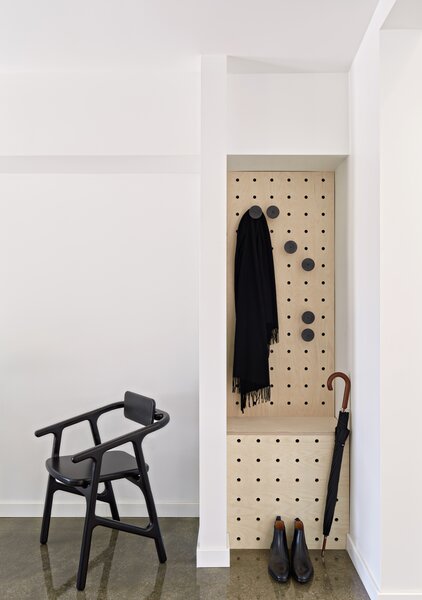Here’s How We Fix the Hole in the Middle of the Housing Market
Soaring real estate prices are putting homeownership further out of reach for families in urban centers, but these architects, designers, and developers have a plan.

Soaring real estate prices are putting homeownership further out of reach for families in urban centers, but these architects, designers, and developers have a plan.
Call it the enduring American Dream, or call it old-fashioned, but homeownership still figures on wish lists for folks across the country. Even as definitions of "home" continue to evolve, owning a property remains a key way for many Americans to not just achieve financial stability or generate wealth, but also to create something they can call their own, and foster a sense of community in the process. And yet, never before has becoming a homeowner been so difficult for so many people, especially in urban centers.

Hem House by Chicago studio Future Firm is a 1,300-square-foot stand-alone in the East Garfield Park neighborhood that sold in summer 2021 at its listing price of $399,000. The studio’s cofounders and architects Ann Lui and Craig Reschke are currently replicating the prefab design in two more locations nearby.
Photo: Daniel Kelleghan
A perfect storm of soaring home prices, high demand, and tight supply in major metropolitan areas have resulted in what’s being called the "missing middle"—architect Daniel Parolek’s coinage for the dearth of medium-density housing priced for middle-income buyers. According to the Harvard Joint Center for Housing Studies, home sales over the past two years have risen at their fastest clip since the height of the housing boom in 2006, while total housing inventory has shrunk nearly 30 percent since March 2020. At the same time, the US Census Bureau reports a steady decline in the number of new mid-market homes being built, down from nearly 30 percent of total housing stock in the 1970s to less than 5 percent in recent years. For middle-income buyers seeking a forever home, or even just a a place to get started, the options in American cities are dwindling.
In response, designers and developers across the country are taking up the call to crack the code on middle-market housing. Ann Lui and Craig Reschke, architects and cofounders of Future Firm, noticed the lack of housing options in their native Chicago and wondered if design could offer a solution. In particular, they wanted to take advantage of the city’s many disused lots to create single-family homes—several communities have voiced a desire for this, says Lui—comparable in price to a condo. They began by turning to history.
"We looked to precedents like the Eames House to rethink housing from a design perspective," she says, evoking the famous Los Angeles residence that embraced prefabrication and off-the-shelf materials as a case study for more cost-efficient housing.

In designing the home, Lui and Reschke were inspired by the Eames House in Los Angeles, which favored prefabricated construction over proprietary building methods, and used off-the-shelf materials instead of bespoke finishes.
"Rather than looking at a smaller budget as a negative, we approached it as a design challenge for creating interesting architectural qualities that people might be excited about," says Lui.
Photo: Daniel Kelleghan

Future Firm positioned the home to the side of the narrow lot to capture as much light as possible.
Photo: Daniel Kelleghan
See the full story on Dwell.com: Here’s How We Fix the Hole in the Middle of the Housing Market
